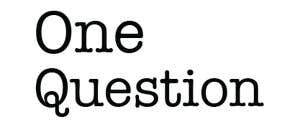During the summer of 1854, thousands of Londoners contracted cholera during what the contemporary epidemiologist John Snow described as the “most terrible outbreak … which ever occurred in this kingdom.” In the densely populated environs around Golden Square, people were besieged by the illness known for its continual bouts of diarrhea and potentially fatal dehydration.
Medical authorities of the time attributed the epidemic to noxious vapors hanging in dense clouds around the city, generated by rotting organic matter. For two millennia, everything from typhus to the bubonic plague had been attributed to these “miasmas,” and treatment was prescribed accordingly: purifying the air of smells and removing rubbish from the streets. Except cholera had nothing to do with the air that Londoners breathed, but rather with bacteria in the water which they drank, something discovered by Snow, who traced the outbreak to a contaminated public water pump on Broad Street. By the end of the summer 1854 epidemic, 616 Londoners would be dead.
It wasn’t until two decades later, in 1876, that miasma theory was definitively replaced by the germ theory of disease, which holds that microscopic organisms are responsible for causing infectious diseases, and can be passed from one person to the next. This shift was arguably one of the most consequential in modern medicine, and it led in turn to vaccines and antibiotics. The result would be an almost incalculable number of lives saved.
Today, the long discredited miasma theory of disease has a strange new proponent in the form of Secretary of Health and Human Services Robert F. Kennedy Jr., who endorses it in his 2021 book The Real Anthony Fauci: Bill Gates, Big Pharma, and the Global War on Democracy and Public Health. As a scholar of public humanities, I found it a striking return of such an old and disproven idea.
The history of science is a history of discarded ideas. Phlogiston and aether, vortices and humors … miasma.
Kennedy seems to equate the germ theory of disease with big pharma “pushing patented pills, powders, pricks, potions, and poisons” and with what he calls, “the powerful professions of virology and vaccinology.” Miasma theory, on the other hand, he says, “emphasizes preventing disease by fortifying the immune system through nutrition and reducing exposures to environmental toxins and stresses.” This faulty reasoning perhaps explains his antagonism toward vaccines, his claims that HIV does not cause AIDS or spread from one person to another, and his position that preventive healthcare, such as a healthy diet, exercise, and an environment free of harmful chemicals, alone can prevent diseases. These are the core principles of the so-called MAHA (Make America Healthy Again) movement, a slogan coined by Kennedy.
Few in the field of medicine would deny that stress, environmental toxins, poor diet, and inactivity can weaken the immune system and make illness worse. But more than a century of scientific evidence now shows that microorganisms are the source of infectious diseases and that vaccines can safely protect people against them. And unlike the physicians working in Victorian London, Kennedy has access to this evidence, which is why it’s so important to remember how, exactly, science operates.
The history of science is a history of discarded ideas. Phlogiston and aether, vortices and humors … miasma. Philosopher Thomas Kuhn in his influential 1962 The Structure of Scientific Revolutions describes how consensus science is disrupted by consequential “paradigm shifts” in thought based in the construction of better models to explain new evidence.
Epistemologically, “truth” and “facts” operate in different ways. The former is the realm of inviolate, immutable, and often empirically unprovable suppositions and values, whereas the latter are contingent, relative, and liable to change based on new evidence. Unlike religion or metaphysics—or political ideology—science’s concern is with facts rather than truth, and facts can be organized into comprehensive models of reality that work until they don’t. “Scientific revolutions are inaugurated by a growing sense … that an existing paradigm has ceased to function adequately,” writes Kuhn.
But paradigm shifts are often stalled—and, as with Kennedy, sometimes the old, non-functional ideas resurface, due to ideology rather than to science, almost universally to catastrophic ends. We have been here before.
In 1940, Trofim Lysenko was named by Joseph Stalin the director of the Institute of Genetics of the Soviet Academy of Sciences. He was put in charge of the U.S.S.R. agronomic policy where he advocated for long disproven scientific theories to disastrous consequences. For instance, before Darwinian natural selection and Gregor Mendel’s genetic research had revolutionized an understanding of how evolution operated, many biologists had embraced the thinking of the 19th-century French biologist Jean-Baptiste Lamarck, who famously argued that traits acquired over a lifetime could be passed down to the next generation. Borrowing from Lamarck, Lysenko argued that using manipulations of temperature, plants could be trained to acquire certain characteristics, such as the ability to grow in cold climates, that would be passed to their descendants.
Just as Kennedy’s MAHA movement is attracted to miasma theory for reasons that have nothing to do with the facts, so too was Lysenko an advocate for Lamarckism because he thought it was congruent with Marxist-Leninism, even if it wasn’t confirmed by observation or experimentation. Lysenko, and his powerful Kremlin supporters, believed that the malleability of biology to experience suggested by Lamarckism was consistent with communist ideology, which proposed that rapid change was possible through collective action and social revolutions. But his efforts at “training plants” were an abject failure, and the outcome was millions who died in famines.
“Although it’s impossible to say for sure,” notes American journalist and author Sam Kean in a 2017 article from The Atlantic about a resurgent interest in Russia for the geneticist, “Trofim Lysenko probably killed more human beings than any individual scientist in history.”
When it comes to RFK, should vaccines, and the entire germ theory of disease, be obscured in a fog of miasma ideology and discouraged from official channels, the results will be catastrophic, comparable in irrationality to the same deadly madness that encouraged the Soviet government to embrace Lysenko. History tends to repeat itself. ![]()
Lead image by Tasnuva Elahi; with images by fandijki and zulrakif / Shutterstock
































